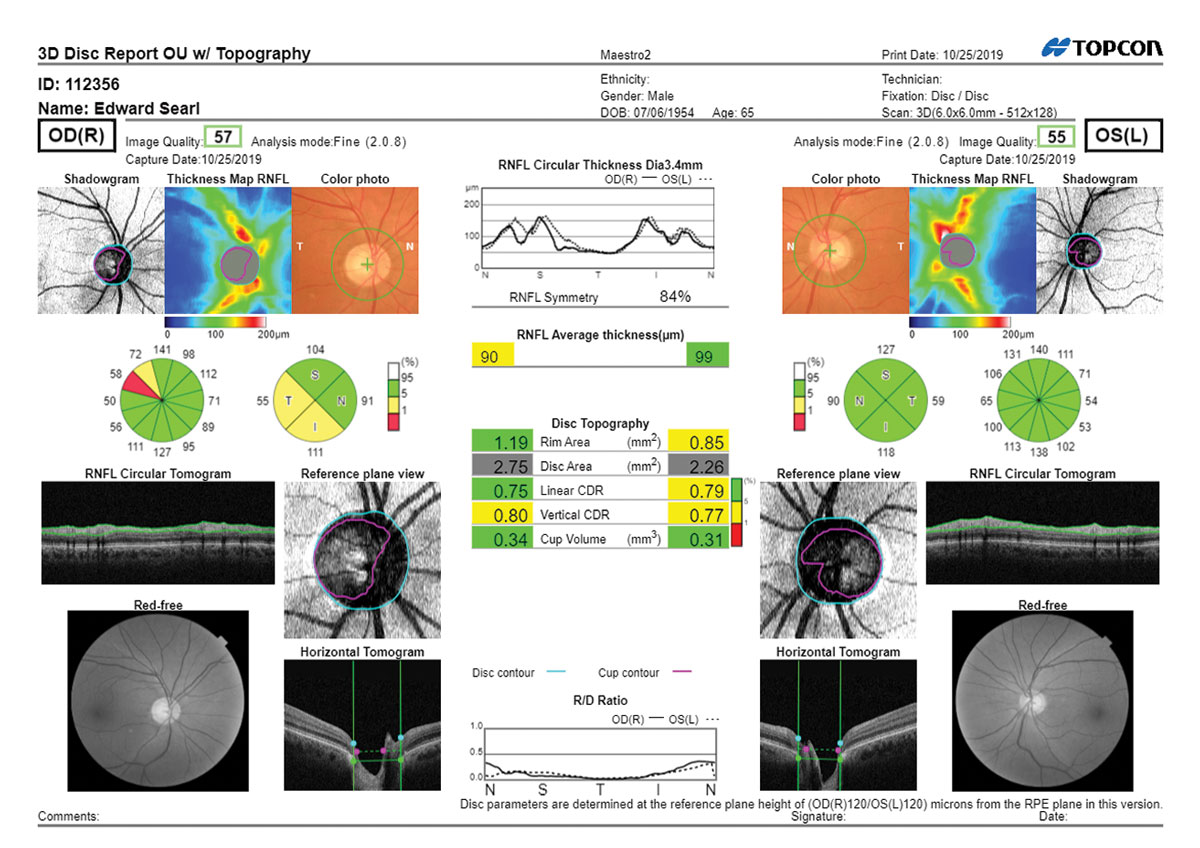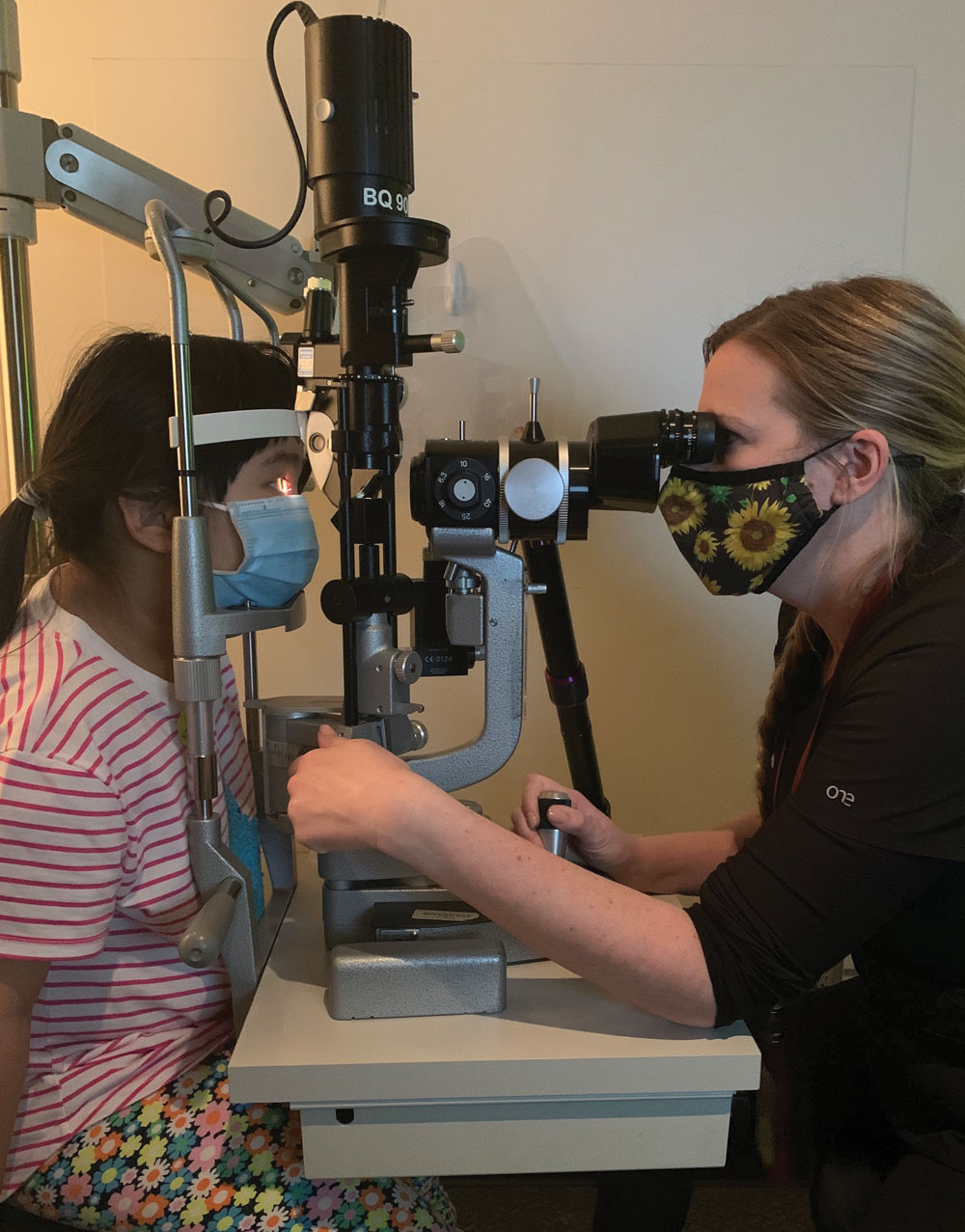As the field of optometry continues to grow, expanding the care provided at your practice is a way to not only stand out but also level up as an eye care professional. It can be a challenging undertaking, but with careful consideration and a clear plan of attack, these changes can take your practice to new heights and enhance the level of care for your patients.
There are a number of benefits to adding new services, including revenue generation and professional growth. “Revenue from optical sales is dwindling for many of our colleagues due to competitive pressures,” says Paul Chous, OD, of Tacoma, WA. “Putting specialty care in place is a way to offset those losses. It also makes practicing optometry more fun and satisfying.”
“Not only does expanding the care you provide help differentiate yourself from other optometry practices, it also breaks up the routine,” adds Brooke Messer, OD, of Sioux Falls, SD. “It’s a new challenge that requires you to stretch your brain in different ways and learn something new. It is also very rewarding because it allows you to offer another level of care to your patients that can have a significant impact on their quality of life.”
When considering adding a specialty service into your practice, it is important to lay the groundwork and set yourself up for success. This includes choosing an aspect of care that is the right fit for you as an optometrist, as well as your practice and patients. Here we explore a few of the many specialty areas you can integrate to not only enhance the care your patients receive, but also your own professional growth and career satisfaction.
Key Considerations
No matter the specialty service you are exploring for your practice, there are key considerations that should not be overlooked. First and foremost, do you have a passion for this new aspect of care?
“To be successful, you need a genuine interest,” says Dr. Messer. “If you don’t care to manage the disease, you won’t—regardless of the equipment or investment you make. And so, before you add anything new, you have to decide whether or not you want to delve into this specific area of care.”
Equally important is having an educated staff that is prepared to support you in this new endeavor. “You must provide your team with the necessary education while also making sure they believe in the value of these services because they will often be the ones fielding initial questions and engaging with patients,” explains Dr. Messer.
Additionally, you need to know where your patients are going to come from, she notes. Are you already seeing patients who need this service? When it comes to new patients, how will you generate referrals? A clear plan will help set you up for success and ensure you make the most of your investment.
There are a number of other important questions to ask yourself, according to Dr. Chous. How prevalent is the condition for which specialty services will be provided? What are the financial costs of implementing these services? This could include acquisition of instrumentation and the time commitment required to learn new skills as well as reimbursement. How does it compare to income generated by your customary goods and services? Can additional services be billed as medical rather than vision care services?
“When considering additional services of care in practice, analyze your patient base to make sure we have the need for the service,” recommends Carol Parker, OD, of Louisville, KY. “Next, make sure you can incorporate it into your daily work schedule. Will you need added personnel to be able to effectively incorporate it? Lastly, is this something that you feel is not only beneficial to the patient, but for your practice growth and is focused in the direction of your practice’s mission statement?”
 |
When including diabetes management, multiple imaging modalities—to catch signs of diabetic retinopathy, for example, as seen here—are important to have in your practice. Click image to enlarge. |
Avenues for Growth
There is a plethora of opportunities for optometrists to expand their practice and the care they provide, from specialty contact lenses, ocular surface disease, vision rehabilitation and binocular vision to diabetes management, pediatrics, myopia control and low vision to name a few.
“We continue to expand in the medical arena of glaucoma, retina, lasers and some in-office surgical procedures. Presbyopia treatments are being researched and may be available soon,” says Dr. Parker. “Specialty contact lenses are rapidly increasing with the newer products evolving. The dry eye industry continues to grow with newer interventions for MGD, new pharmaceutical treatments and OTC supplements.
“When adding a new addition to your clinic, gather all the information, do your training and figure out how you will add it to your existing schedule,” she continues. “Once you are ready to offer the service, be prepared to accommodate how fast word of mouth travels.”
Diabetes management. If you are interested in adding diabetes care into your repertoire, Dr. Chous, who specializes in diabetes eye care, recommends investing the time necessary to learn everything you can about the diagnosis and pathobiology of the disease at large and, more specifically, diabetes-related eye disease.
“The AOA’s Evidence-Based Clinical Practice Guidelines for the Care of Patients with Diabetes Mellitus, 2nd edition, is a great place to start, but I would also strongly recommend consistent perusal of the medical literature and CE courses focused specifically on diabetes,” he suggests.
Successful implementation of a specialty service, like diabetes management, depends on access to the right instrumentation. This includes multiple imaging modalities—specifically, retinal photography and SD-OCT, according to Dr Chous. Less expensive but just as important tools to have in your practice include in-office blood glucose meter with single-use lancets, rapid-acting carbohydrate to treat acute hypoglycemia that is prevalent in those on insulin and/or sulfonylurea therapy.
The right equipment—and the knowledge of how to use it—are key factors when it comes to positioning yourself as an expert and successfully building a new service into your practice. “I have gotten dozens of patient referrals because I knew the diagnostic criteria for diagnosis of diabetes management and how to respond to low blood glucoses in my office,” notes Dr. Chous.
A broad understanding of nutritional/lifestyle impacts on diabetes is also crucial and helps set you apart from other providers. “Patients are thirsty for practical advice about better diabetes management, and evidence shows that the overwhelming majority are not receiving any formal diabetes education, so understanding diabetes and being simpatico with knowledgeable diabetes providers in your community is very helpful,” explains Dr. Chous. “All it takes is a few diabetes-savvy primary care providers or endocrinologists who have confidence in you to grow your practice.”
Incorporating any new specialty service requires time to learn and grow. It also comes with difficulties. “In the diabetes arena, many ODs face ignorance from physicians about what we know and do,” says Dr. Chous. “The way to combat this is one physician at a time, showing the rest of the diabetes care team that we cannot only detect, stage and appropriately refer diabetic retinopathy, but also add value to their care by delivering consistent and complementary messages.”
Glaucoma. With an aging population and growing disease prevalence, now is the time to embrace management of these patients. While caring for glaucoma patients can be a challenge, it is also a rewarding and lucrative opportunity.
As with the implementation of any new specialty, it begins with investing in education and the right equipment. To properly assess these patients, Deepak Gupta, OD, of Milford, CT, recommends having—at the very least: applanation tonometer, gonioscope, fundus camera and a threshold visual field analyzer.1
This can be a costly undertaking, which is why it is important—as previously mentioned—to have a strong commitment to this area of care, as well as a comprehensive understanding of your budget and the needs of their patients and practice.
When initiating patient acquisition, Eric Schmidt, OD, president of Omni Eye Specialists in Wilmington, NC, suggests sharing services with current patients as well as local practices. Establishing your practice as safe and trustworthy will help set you apart and encourage other physicians to send you referrals.2
A challenging aspect of glaucoma management is patient education. Ensuring patients understand the disease and its sight-threatening implications is key when it comes to compliance. If your patient understands the seriousness of their condition, they are more likely to adhere to treatment, which leads to better outcomes.
Laser therapy, in particular selective laser trabeculoplasty, is becoming a first-line treatment option for certain glaucoma patients.3 If you practice in a state that allows to perform such procedures, this is another way to set yourself apart and grow your practice.
 |
Investing in the right equipment, such as OCT, is essential to success when adding glaucoma to your practice. Click image to enlarge. |
Specialty contact lenses. This growing area of optometry is an excellent option if you have an interest in contact lenses and a desire to enhance your practice with a specialty offering. But where to start? Dr. Messer, who specializes in fitting patients with corneal and scleral lenses, recommends reaching out and building relationships with the specialty laboratories. The Gas Permeable Lens Institute offers a directory that can help you find a partner lab. Many labs offer the full toolbox of specialty lenses, from scleral gas permeable lenses to custom soft options. When selecting a partner lab, first consider the lenses you’ll be using the most and visit with the consultants on their available training to bring you up to speed. If you’re just starting, Dr. Messer also suggests connecting with one or two labs and then building from there as needed.
Like any other niche, knowledge is invaluable, and taking the time to attend meetings in the specialty of your choice is important. “Take advantage of the specialty meetings for continuing education,” says Dr. Messer, noting that it’s important to spend time in the exhibit hall as well. “This is an opportunity to talk and connect with laboratory representatives, so when you do call to order a lens, they will recall your conversation and spend extra time to make sure you understand and are confident in the fitting process. In short, the laboratory consultants are such a great resource.”
Successfully integrating this service also depends on patient communication and education. “It is crucial to have discussions with your patients,” notes Dr. Messer. “When you identify a patient who would be a good candidate for specialty lenses, talk to them about their options. Start with the cases you feel most comfortable with and then as you build your expertise and confidence you can tackle more challenging patients.
“You just have to commit to talking about it,” she emphasizes. “And the same goes for your team. Educate them on the patients who may benefit, so they can flag them on the schedule and you can be ready with a game plan and materials to educate them on the new service.”
It’s important to find a balance that includes clinical expertise and practice management, according to Dr. Messer. Therefore, organization is critical as each lab has different requirements to maintain your warranty and credits with them, she explains. As you grow, it could be worthwhile to have a staff member who is fully dedicated to managing the logistics of the specialty lens process.
Another consideration is your time. Ordering lenses can be a long process and the more patients you have wearing specialty lenses, the more time you need to order lenses via phone or email. Dr. Messer recommends blocking off time during the day to ensure you don’t get behind. “You’ll need time to consult with the lab during their business hours,” she says. “I set aside time in my schedule before or after lunch to make those calls.”
 |
Scleral lenses are one of the many specialty items you can offer your patients. Click image to enlarge. |
Myopia control. With an increased focus on the hazards of myopia, consider implementing myopia control into your practice. Several treatment options are available, including atropine drops, orthokeratology lenses, soft multifocal contact lenses and even spectacle lenses (e.g., Essilor’s new Stellest product).
If you have a desire to implement this service into your practice, the first step is learning everything you can about myopia management, both from a clinical and business perspective, according to expert consultant Gary Gerber, OD.2 All staff members must have the training so they can effectively explain myopia and its treatment to parents.
Investing in technology is also vital. Tools that could help you optimize myopia management include corneal topography, open-field autorefraction, peripheral autorefraction and wavefront aberrometry.2
While managing myopia can be time consuming, it is a rewarding endeavor that not only enhances the care you provide, but can also offer significant, long-term benefits for patients. These benefits should be emphasized to parents, according to Kevin Chan, OD, of Vienna, VA, who also suggests that optometrists conduct pre-testing with younger patients instead of relying on technicians. This allows you the opportunity to develop a strong relationship with the child and their parents from the start.2
 |
As the myopia population grows, adding mitigation efforts to your practice gives you the opportunity to provide long-term benefits for your patients. Click image to enlarge. |
Strategic Approach
Adding a new aspect of care into a practice can be difficult, so it’s important to adopt a strategic approach. This includes recognizing that incorporation of any new service takes time and there will be a learning curve for everyone involved.
“When expanding services, it is hard to just make yourself do it. You need to make sure the staff is on board with the new services being offered and make sure you have a plan of how you will be announcing them and implementing them into the schedule,” says Dr. Parker. “Everyone needs to be trained and appreciate what is being offered or they will not offer them to the patients. If your staff is not educated and doesn’t truly believe in what is being offered, they will not use it or make anyone aware of the new products and services.”
It is also crucial to allow yourself the time necessary to learn and improve your skills. Beginning a new service with your most difficult case is a recipe for failure. “Your best candidates for your new skills should be those with mild to moderate levels of the condition you’re managing,” says Dr. Messer. “For instance, you probably don’t want learn orthokeratology on a patient with high myopia. Starting with a less challenging patient increases your likelihood of success while helping you gain confidence and hone your skills.”
Don’t be hesitant to ask for help. Find a mentor who can help you on your journey into any type of optometric specialty care, Dr. Chous urges. It is also important to recognize that while having the right technology is a key component, it’s not the only factor necessary for your success.
“Technology is great and impressive, but won’t generate referrals de novo,” notes Dr. Chous. “My advice is to invite friendly (or at least open-minded) potential referral sources to your office to demonstrate what you offer and why it will help their patients. Give it time, and eventually those same referral sources will be sending you their patients and requesting your services for themselves and their family members.”
Expanding the services you provide as an optometrist are beneficial to not only you and your patients, but the profession as a whole.
“It is beneficial for survival in private practice,” says Dr. Parker. “Reimbursements are continually being reduced and we must find new avenues of revenue. Yet, they need to feel these are serving a purpose and need for the patients. If not, it will show, and patients will distrust the provider and may leave the practice and go elsewhere. So, it is a fine line between expanding to benefit the patient and expanding to benefit the provider. It must be mutually inclusive.”
| 1. Gupta D. Initiating a Successful Glaucoma Practice. Review of Optometry. 2016. www.reviewofoptometry.com/article/initiating-a-successful-glaucoma-practice. 2. Manthorp C. Why Refer When You Can Retain? Review of Optometry. 2018. www.reviewofoptometry.com/article/why-refer-when-you-can-retain. 3. Lighthizer N. Get Laser Focused on the Appropriate Glaucoma Treatment. Review of Optometry. 2016. www.reviewofoptometry.com/article/get-laser-focused-on-the-appropriate-glaucoma-treatment. |

